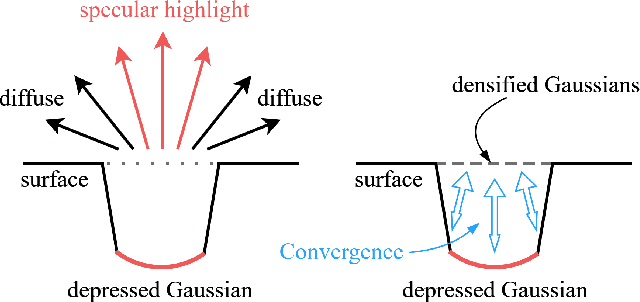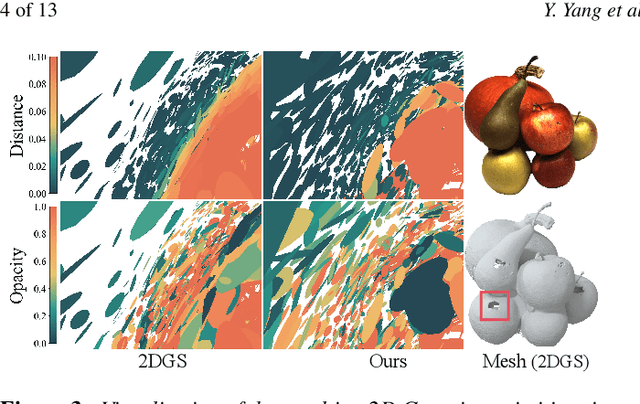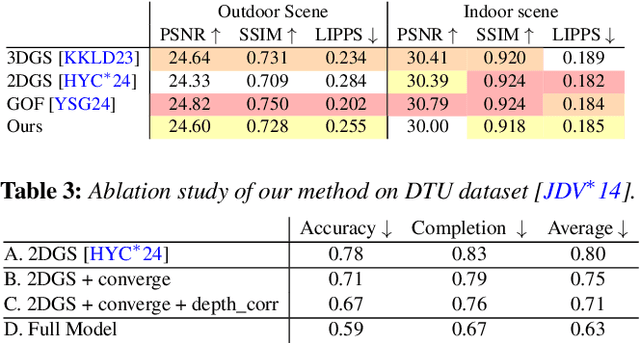Yixin Yang
RICo: Refined In-Context Contribution for Automatic Instruction-Tuning Data Selection
May 18, 2025Abstract:Data selection for instruction tuning is crucial for improving the performance of large language models (LLMs) while reducing training costs. In this paper, we propose Refined Contribution Measurement with In-Context Learning (RICo), a novel gradient-free method that quantifies the fine-grained contribution of individual samples to both task-level and global-level model performance. RICo enables more accurate identification of high-contribution data, leading to better instruction tuning. We further introduce a lightweight selection paradigm trained on RICo scores, enabling scalable data selection with a strictly linear inference complexity. Extensive experiments on three LLMs across 12 benchmarks and 5 pairwise evaluation sets demonstrate the effectiveness of RICo. Remarkably, on LLaMA3.1-8B, models trained on 15% of RICo-selected data outperform full datasets by 5.42% points and exceed the best performance of widely used selection methods by 2.06% points. We further analyze high-contribution samples selected by RICo, which show both diverse tasks and appropriate difficulty levels, rather than just the hardest ones.
ICon: In-Context Contribution for Automatic Data Selection
May 08, 2025Abstract:Data selection for instruction tuning is essential for improving the performance of Large Language Models (LLMs) and reducing training cost. However, existing automated selection methods either depend on computationally expensive gradient-based measures or manually designed heuristics, which may fail to fully exploit the intrinsic attributes of data. In this paper, we propose In-context Learning for Contribution Measurement (ICon), a novel gradient-free method that takes advantage of the implicit fine-tuning nature of in-context learning (ICL) to measure sample contribution without gradient computation or manual indicators engineering. ICon offers a computationally efficient alternative to gradient-based methods and reduces human inductive bias inherent in heuristic-based approaches. ICon comprises three components and identifies high-contribution data by assessing performance shifts under implicit learning through ICL. Extensive experiments on three LLMs across 12 benchmarks and 5 pairwise evaluation sets demonstrate the effectiveness of ICon. Remarkably, on LLaMA3.1-8B, models trained on 15% of ICon-selected data outperform full datasets by 5.42% points and exceed the best performance of widely used selection methods by 2.06% points. We further analyze high-contribution samples selected by ICon, which show both diverse tasks and appropriate difficulty levels, rather than just the hardest ones.
Unveiling Latent Information in Transaction Hashes: Hypergraph Learning for Ethereum Ponzi Scheme Detection
Mar 27, 2025Abstract:With the widespread adoption of Ethereum, financial frauds such as Ponzi schemes have become increasingly rampant in the blockchain ecosystem, posing significant threats to the security of account assets. Existing Ethereum fraud detection methods typically model account transactions as graphs, but this approach primarily focuses on binary transactional relationships between accounts, failing to adequately capture the complex multi-party interaction patterns inherent in Ethereum. To address this, we propose a hypergraph modeling method for the Ponzi scheme detection method in Ethereum, called HyperDet. Specifically, we treat transaction hashes as hyperedges that connect all the relevant accounts involved in a transaction. Additionally, we design a two-step hypergraph sampling strategy to significantly reduce computational complexity. Furthermore, we introduce a dual-channel detection module, including the hypergraph detection channel and the hyper-homo graph detection channel, to be compatible with existing detection methods. Experimental results show that, compared to traditional homogeneous graph-based methods, the hyper-homo graph detection channel achieves significant performance improvements, demonstrating the superiority of hypergraph in Ponzi scheme detection. This research offers innovations for modeling complex relationships in blockchain data.
Introducing Unbiased Depth into 2D Gaussian Splatting for High-accuracy Surface Reconstruction
Mar 09, 2025



Abstract:Recently, 2D Gaussian Splatting (2DGS) has demonstrated superior geometry reconstruction quality than the popular 3DGS by using 2D surfels to approximate thin surfaces. However, it falls short when dealing with glossy surfaces, resulting in visible holes in these areas. We found the reflection discontinuity causes the issue. To fit the jump from diffuse to specular reflection at different viewing angles, depth bias is introduced in the optimized Gaussian primitives. To address that, we first replace the depth distortion loss in 2DGS with a novel depth convergence loss, which imposes a strong constraint on depth continuity. Then, we rectified the depth criterion in determining the actual surface, which fully accounts for all the intersecting Gaussians along the ray. Qualitative and quantitative evaluations across various datasets reveal that our method significantly improves reconstruction quality, with more complete and accurate surfaces than 2DGS.
KnowLogic: A Benchmark for Commonsense Reasoning via Knowledge-Driven Data Synthesis
Mar 08, 2025Abstract:Current evaluations of commonsense reasoning in LLMs are hindered by the scarcity of natural language corpora with structured annotations for reasoning tasks. To address this, we introduce KnowLogic, a benchmark generated through a knowledge-driven synthetic data strategy. KnowLogic integrates diverse commonsense knowledge, plausible scenarios, and various types of logical reasoning. One of the key advantages of KnowLogic is its adjustable difficulty levels, allowing for flexible control over question complexity. It also includes fine-grained labels for in-depth evaluation of LLMs' reasoning abilities across multiple dimensions. Our benchmark consists of 3,000 bilingual (Chinese and English) questions across various domains, and presents significant challenges for current LLMs, with the highest-performing model achieving only 69.57\%. Our analysis highlights common errors, such as misunderstandings of low-frequency commonsense, logical inconsistencies, and overthinking. This approach, along with our benchmark, provides a valuable tool for assessing and enhancing LLMs' commonsense reasoning capabilities and can be applied to a wide range of knowledge domains.
Beyond Single Frames: Can LMMs Comprehend Temporal and Contextual Narratives in Image Sequences?
Feb 19, 2025Abstract:Large Multimodal Models (LMMs) have achieved remarkable success across various visual-language tasks. However, existing benchmarks predominantly focus on single-image understanding, leaving the analysis of image sequences largely unexplored. To address this limitation, we introduce StripCipher, a comprehensive benchmark designed to evaluate capabilities of LMMs to comprehend and reason over sequential images. StripCipher comprises a human-annotated dataset and three challenging subtasks: visual narrative comprehension, contextual frame prediction, and temporal narrative reordering. Our evaluation of $16$ state-of-the-art LMMs, including GPT-4o and Qwen2.5VL, reveals a significant performance gap compared to human capabilities, particularly in tasks that require reordering shuffled sequential images. For instance, GPT-4o achieves only 23.93% accuracy in the reordering subtask, which is 56.07% lower than human performance. Further quantitative analysis discuss several factors, such as input format of images, affecting the performance of LLMs in sequential understanding, underscoring the fundamental challenges that remain in the development of LMMs.
E2VIDiff: Perceptual Events-to-Video Reconstruction using Diffusion Priors
Jul 11, 2024Abstract:Event cameras, mimicking the human retina, capture brightness changes with unparalleled temporal resolution and dynamic range. Integrating events into intensities poses a highly ill-posed challenge, marred by initial condition ambiguities. Traditional regression-based deep learning methods fall short in perceptual quality, offering deterministic and often unrealistic reconstructions. In this paper, we introduce diffusion models to events-to-video reconstruction, achieving colorful, realistic, and perceptually superior video generation from achromatic events. Powered by the image generation ability and knowledge of pretrained diffusion models, the proposed method can achieve a better trade-off between the perception and distortion of the reconstructed frame compared to previous solutions. Extensive experiments on benchmark datasets demonstrate that our approach can produce diverse, realistic frames with faithfulness to the given events.
ColorMNet: A Memory-based Deep Spatial-Temporal Feature Propagation Network for Video Colorization
Apr 09, 2024Abstract:How to effectively explore spatial-temporal features is important for video colorization. Instead of stacking multiple frames along the temporal dimension or recurrently propagating estimated features that will accumulate errors or cannot explore information from far-apart frames, we develop a memory-based feature propagation module that can establish reliable connections with features from far-apart frames and alleviate the influence of inaccurately estimated features. To extract better features from each frame for the above-mentioned feature propagation, we explore the features from large-pretrained visual models to guide the feature estimation of each frame so that the estimated features can model complex scenarios. In addition, we note that adjacent frames usually contain similar contents. To explore this property for better spatial and temporal feature utilization, we develop a local attention module to aggregate the features from adjacent frames in a spatial-temporal neighborhood. We formulate our memory-based feature propagation module, large-pretrained visual model guided feature estimation module, and local attention module into an end-to-end trainable network (named ColorMNet) and show that it performs favorably against state-of-the-art methods on both the benchmark datasets and real-world scenarios. The source code and pre-trained models will be available at \url{https://github.com/yyang181/colormnet}.
Can Large Multimodal Models Uncover Deep Semantics Behind Images?
Feb 17, 2024



Abstract:Understanding the deep semantics of images is essential in the era dominated by social media. However, current research works primarily on the superficial description of images, revealing a notable deficiency in the systematic investigation of the inherent deep semantics. In this work, we introduce DEEPEVAL, a comprehensive benchmark to assess Large Multimodal Models' (LMMs) capacities of visual deep semantics. DEEPEVAL includes human-annotated dataset and three progressive subtasks: fine-grained description selection, in-depth title matching, and deep semantics understanding. Utilizing DEEPEVAL, we evaluate 9 open-source LMMs and GPT-4V(ision).Our evaluation demonstrates a substantial gap between the deep semantic comprehension capabilities of existing LMMs and humans. For example, GPT-4V is 30% behind humans in understanding deep semantics, even though it achieves human-comparable performance in image description. Further analysis indicates that the integration of description texts during the inference process notably enhances LMMs' ability to perceive deep semantics. Furthermore, our dataset is divided into multiple categories, and we conducted a more detailed analysis within these categories.
EventAid: Benchmarking Event-aided Image/Video Enhancement Algorithms with Real-captured Hybrid Dataset
Dec 13, 2023Abstract:Event cameras are emerging imaging technology that offers advantages over conventional frame-based imaging sensors in dynamic range and sensing speed. Complementing the rich texture and color perception of traditional image frames, the hybrid camera system of event and frame-based cameras enables high-performance imaging. With the assistance of event cameras, high-quality image/video enhancement methods make it possible to break the limits of traditional frame-based cameras, especially exposure time, resolution, dynamic range, and frame rate limits. This paper focuses on five event-aided image and video enhancement tasks (i.e., event-based video reconstruction, event-aided high frame rate video reconstruction, image deblurring, image super-resolution, and high dynamic range image reconstruction), provides an analysis of the effects of different event properties, a real-captured and ground truth labeled benchmark dataset, a unified benchmarking of state-of-the-art methods, and an evaluation for two mainstream event simulators. In detail, this paper collects a real-captured evaluation dataset EventAid for five event-aided image/video enhancement tasks, by using "Event-RGB" multi-camera hybrid system, taking into account scene diversity and spatiotemporal synchronization. We further perform quantitative and visual comparisons for state-of-the-art algorithms, provide a controlled experiment to analyze the performance limit of event-aided image deblurring methods, and discuss open problems to inspire future research.
 Add to Chrome
Add to Chrome Add to Firefox
Add to Firefox Add to Edge
Add to Edge